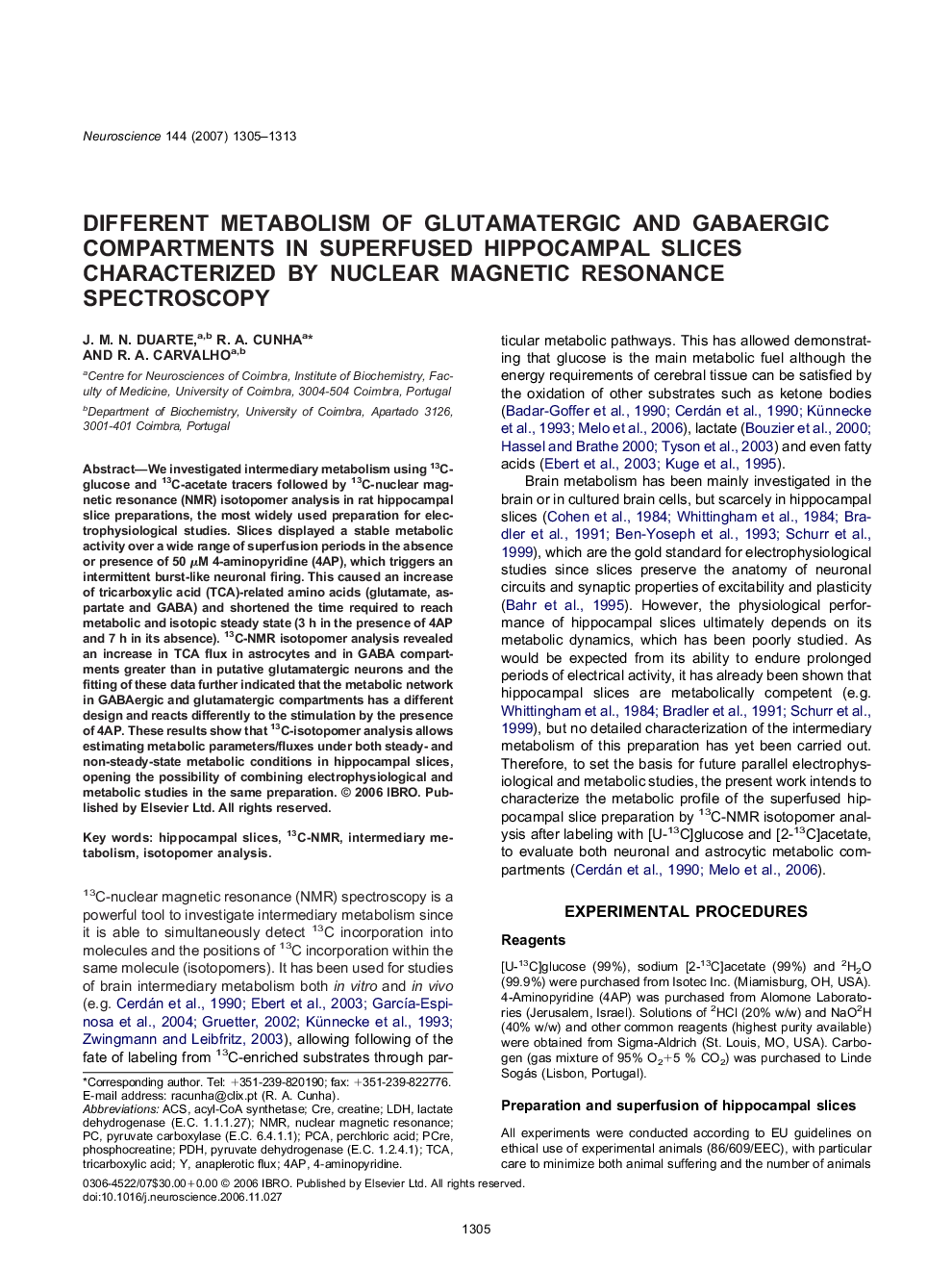| Article ID | Journal | Published Year | Pages | File Type |
|---|---|---|---|---|
| 4341231 | Neuroscience | 2007 | 9 Pages |
Abstract
We investigated intermediary metabolism using 13C-glucose and 13C-acetate tracers followed by 13C-nuclear magnetic resonance (NMR) isotopomer analysis in rat hippocampal slice preparations, the most widely used preparation for electrophysiological studies. Slices displayed a stable metabolic activity over a wide range of superfusion periods in the absence or presence of 50 μM 4-aminopyridine (4AP), which triggers an intermittent burst-like neuronal firing. This caused an increase of tricarboxylic acid (TCA)-related amino acids (glutamate, aspartate and GABA) and shortened the time required to reach metabolic and isotopic steady state (3 h in the presence of 4AP and 7 h in its absence). 13C-NMR isotopomer analysis revealed an increase in TCA flux in astrocytes and in GABA compartments greater than in putative glutamatergic neurons and the fitting of these data further indicated that the metabolic network in GABAergic and glutamatergic compartments has a different design and reacts differently to the stimulation by the presence of 4AP. These results show that 13C-isotopomer analysis allows estimating metabolic parameters/fluxes under both steady- and non-steady-state metabolic conditions in hippocampal slices, opening the possibility of combining electrophysiological and metabolic studies in the same preparation.
Keywords
Related Topics
Life Sciences
Neuroscience
Neuroscience (General)
Authors
J.M.N. Duarte, R.A. Cunha, R.A. Carvalho,
